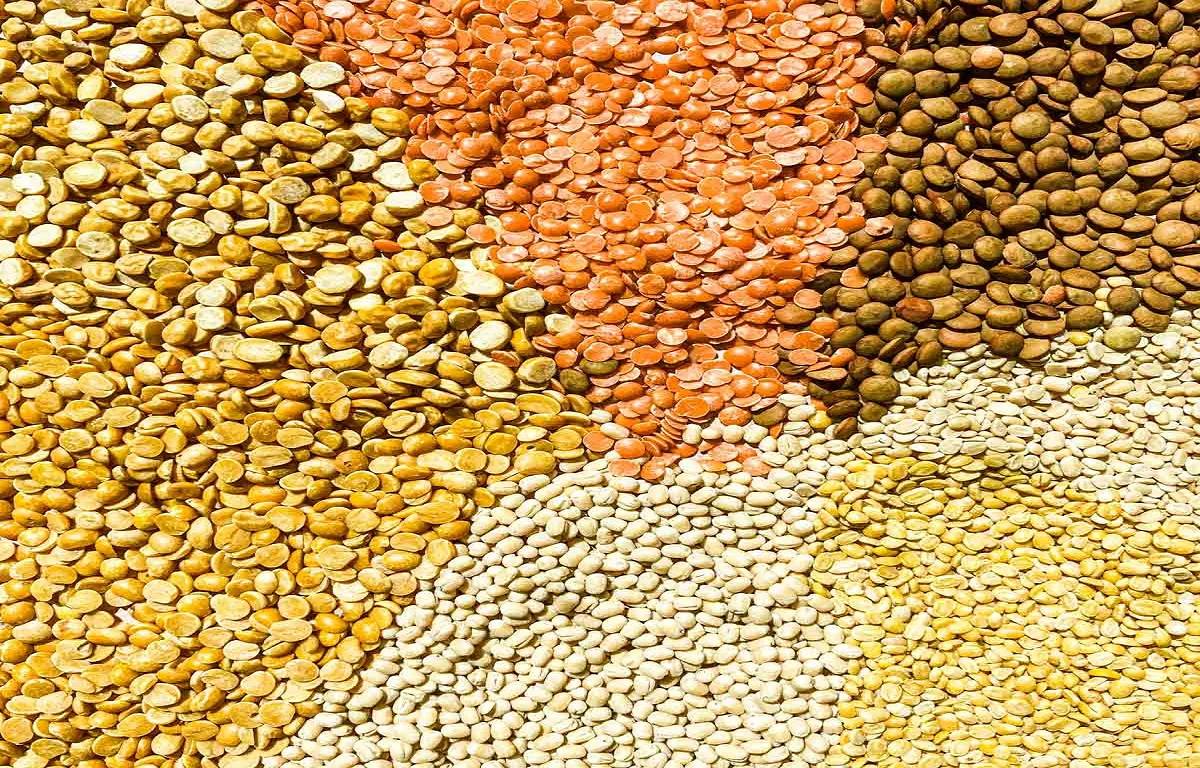
Dal is the popular Indian name for pulses. Pulses come in a wide variety of varieties and are a common fixture in Indian kitchens. They are a powerhouse of proteins and nutrients and are a member of the legume family. Let's know more about the different types of pulses, their health benefits, and some delicious dal dishes.
These vibrant and delicious lentils are a must-have in every Indian cooking. They give a typical Indian dinner some zing and flavor. No Indian meal is complete without a generous helping of dal, whether you have it with rice or with roti. So, let's have a look at some of the various pulses that are used in Indian cuisine.
Red Lentils (Masoor Dal)
Masoor dal is a household name and is found in almost every Indian household. Masoor dal is incredibly nourishing and simple to prepare. As a result, it produces a supper of extraordinary quality. You can fry them, boil them, sauté them- and add a little bit of tadka; you get the drill! Both split and skinned lentil variants are available. There are several variants of brown, green, and french green lentils.
Origin: Asia, Europe, and North Africa.
Colour: Brown, red, or orange.
Nutrition: Calcium, magnesium, and protein.
Health Benefits: It may be appropriate for managing diabetes and also improves immunity.
Bengal Gram (Chana Dal)
Bengal dal tastes great and makes mouthwatering stew. It is closely related to the family of chickpeas. These polished chickpeas taste great when baked or fried.
Origin: Afghani, Persian, and Indian origins.
Colour: Yellow
Nutrition: Selenium, copper, zinc, and antioxidants.
Health Benefits: It may lower the risk of cardiac diseases. It might benefit the health of your skin.
White Gram (Urad Dal)
There are split and skinned versions of the common Indian dish urad dal. They typically taste deliciously earthy. They can be fried or combined with other dals to create a delectable curry. Split and skinned varieties of urad dal are available.
Origin: India
Color: Black, white, and green.
Nutrition: Proteins, phosphorus, and isoflavones.
Health Benefits: May contribute to better teeth and bones. They could improve mental well-being.
Pigeon Peas in Yellow (Tur Dal)
This dal may be purchased for a reasonable price in any nearby grocery store. Additionally, this tur dal yields an incredibly tasty curry. As a result, you can simply include them as a filling meal in your daily diet.
Origin: Africa and India
Color: Yellow to greenish brown.
Nutrition: Phosphorus, folic acid, and vitamins C, E, K, and B.
Health Benefits: It might aid with weight loss. In a healthy pregnancy, tur dal may be beneficial.
Horse Gram (Kulthi dal)
This dal is delicious. It is one of the lentils with the highest protein content on the earth. Due to its excellent nutritional content, racehorses are also given this dal.
Origin: India
Colour: Red to brown to black.
Nutrition: Calcium, proteins, fiber, iron, and fiber.
Health Benefits: Excellent for kidney and gallbladder stones. It could improve liver health.
Chickpeas (Chole)
They go by the name chole as well. It often comes in two sizes: Kabuli chana, which is larger, and desi chana, which is smaller. Usually, they are soaked the night before to ensure appropriate preparation.
Origin: Turkey, Syria, and India.
Colour: Black, and larger ones are white or yellow.
Nutrition: Calcium, iron, fiber, and proteins.
Health Benefits: Regular consumption may enhance brain health. Iron deficiency may be helped by this.
Chickpeas in Black (Kala chana)
The "desi" chana dal is made using black chickpeas (Kala Chana). They have a buttery texture and a nut flavor. As a result, they can make a great light snack to squelch unnecessary hunger.
Origin: Turkey, Syria, and India.
Colour: Typically black.
Nutrition: Proteins, dietary fibres, and iron are all abundant in them.
Health Benefits: It could aid in managing diabetes. Regular consumption could improve cardiovascular health.
Black Urad Dal
Another healthier version of urad dal is urad dal. Additionally, it is readily available, making it simple to include in a daily diet. Besides, it tastes great and is simple to digest.
Origin: India
Colour: White.
Nutrition: Dietary fibres, potassium, and iron are all abundant in them.
Health Benefits: Bone and tooth strength may improve. They might improve your mental well-being.
Green Gram (Moong Dal)
Moong dal sprouts come in the split and peeled varieties. For a wholesome, roasted, or salad-based supper, you can consume fried or roasted. Split and skinned types of moong dal are also offered.
Origin: India
Colour: Green or golden yellow.
Nutrition: Proteins (albumin and globulin), vitamins E, C, A, and K, and other nutrients.
Health Benefits: Consuming it may enhance heart health. It might aid with blood pressure management.
















